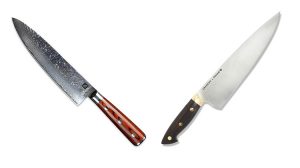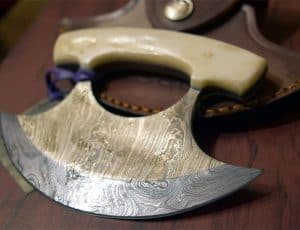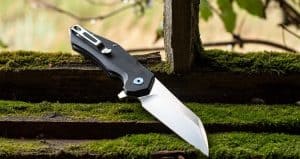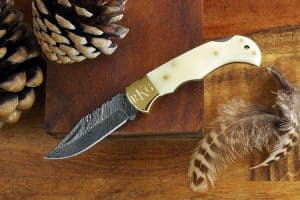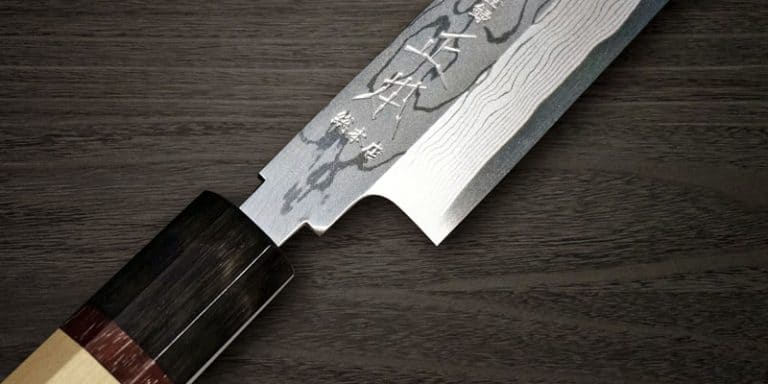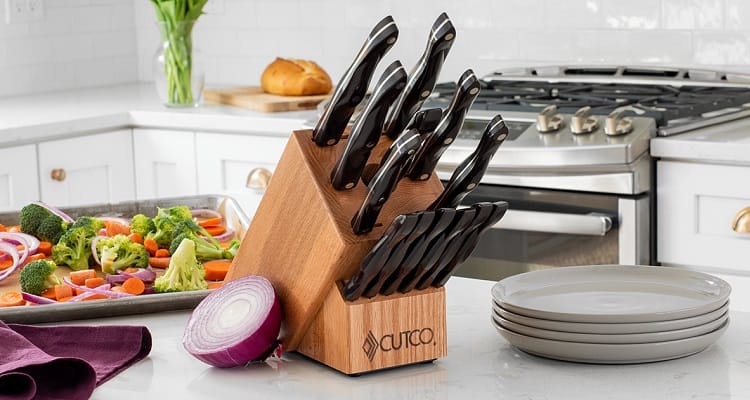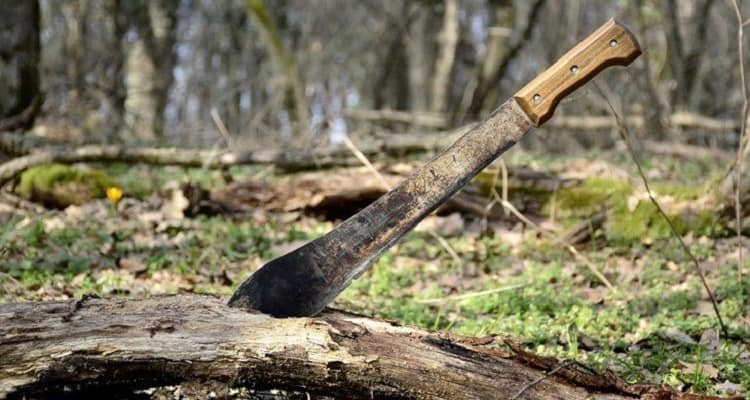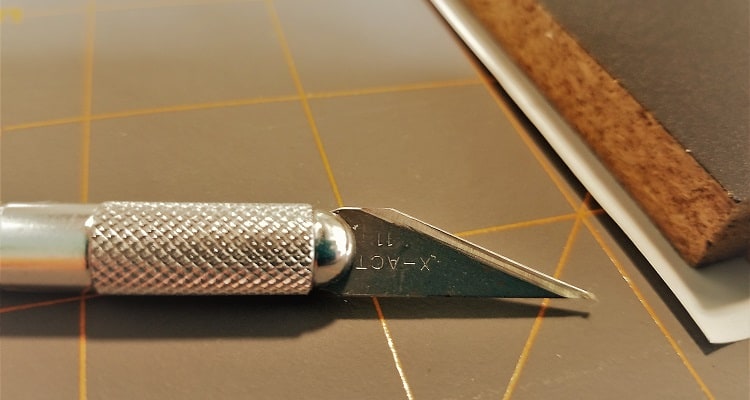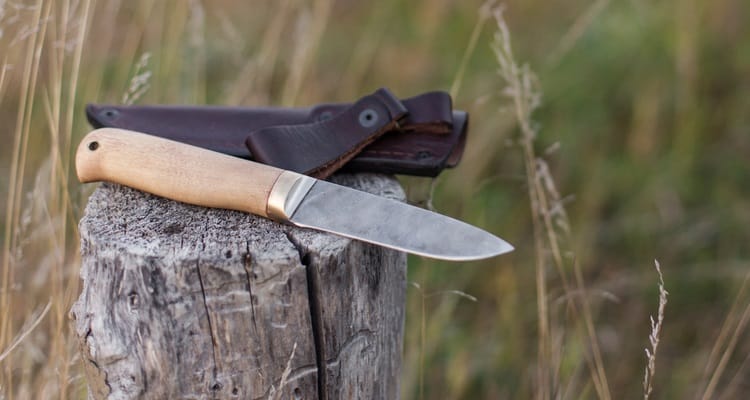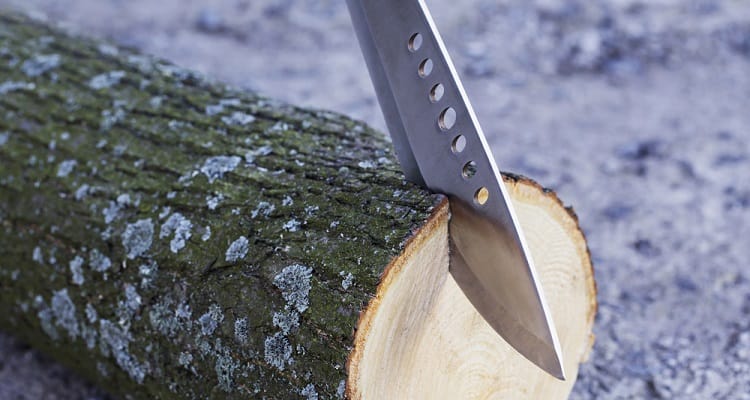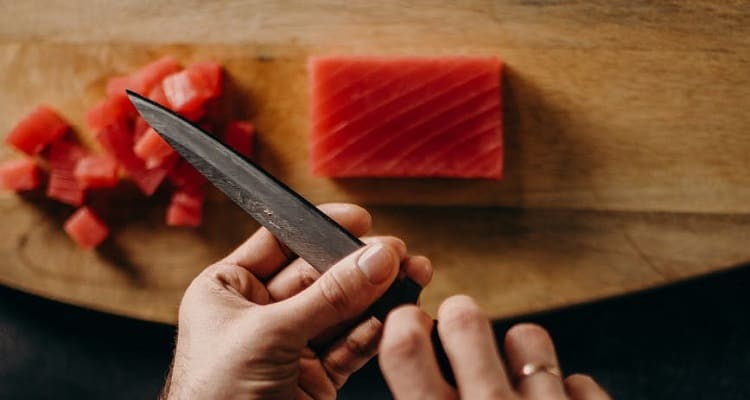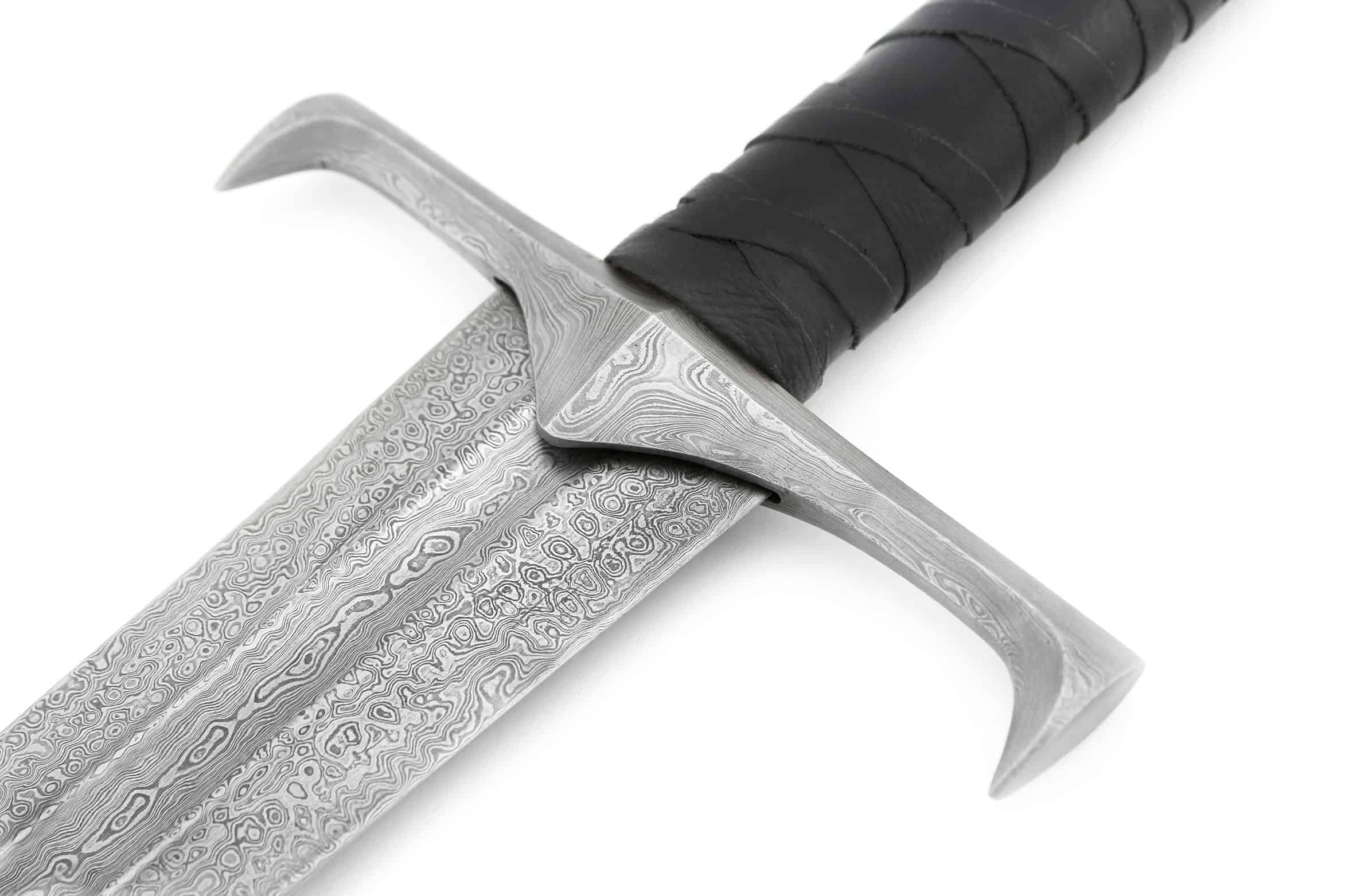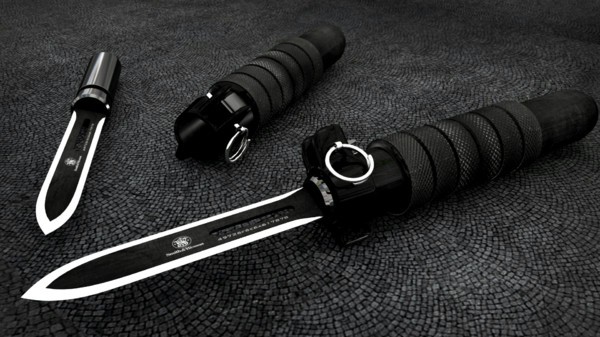When you purchase a new knife, whether it’s a pocket knife, kitchen knife, or even a decorative sword, you put a lot of time and energy into finding the perfect one. You make a list of your needs, do your research, shop around, and finally land on “the one”.
But if you don’t maintain the knife once it’s yours, all that time and energy is wasted and you have to begin the process all over again to find a new one. The key to maintaining your knife is keeping it clean and in good condition.
So how do you clean a knife? There are techniques that are specific to each type of knife, but in general, you should wash the blade thoroughly. Dry the knife immediately to prevent rusting and always keep wooden handles completely dry.

General Guidelines on How to Clean a Knife
Each knife is different, but there are some guidelines that can help you maintain and clean any knife:
- Wash the blade immediately after each use.
- Clean by hand, avoid the dishwasher
- Dry the blade and handle thoroughly to prevent rusting.
- Apply a layer of oil to the blade.
- Store the knife in a dry place that is free of moisture and extreme temperatures.
- Don’t store the knife in a sheath, especially one made of leather, for extended periods.
- If the knife gets wet, dry it immediately and apply oil.
- If the knife is exposed to salt or other materials that may corrode the blade, wash it immediately, dry it thoroughly, and apply oil.
- Wooden handles can be cleaned with furniture polish.
- Clean metal handles the same way you would clean the blade and apply oil.
- Clean the hinges of folding knives with a cotton swab or compressed air, then apply oil to the hinge for smoother opening and closing.
How to Clean a Pocket Knife
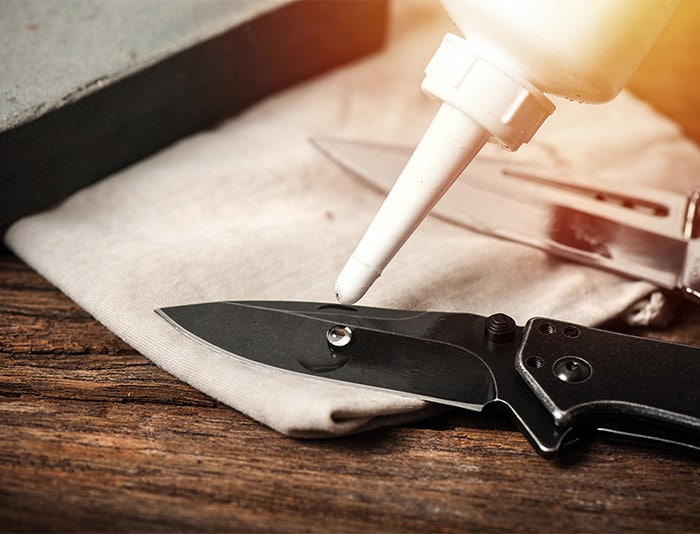
Pocket knives are smaller than other knives, which can make them a challenge to clean. Folding pocket knives also have a hinge which must be cleaned out. These steps can help you clean a pocket knife:
- Clean out debris in the hinge and handle with a cotton swab, compressed air, or toothpick. Make sure the knife is dry when you do this, as wet debris will be more difficult to remove.
- Rinse the knife under warm water. Make sure to flush out the inside of the handle.
- Apply a drop of soap to an old toothbrush and begin to scrub the knife down. Scrub the entire blade and handle, and make sure to remove anything stuck to the locking mechanism.
- If you are cleaning a multi-tool knife, such as a Swiss Army knife, clean each tool individually. Close them as you finish cleaning each one. When you have scrubbed each tool, open them all again. Scrub each tool once more and then scrub the inside of the knife.
- Use a cotton swab or toothpick to clean anything left on the inside of the knife. Make sure to check corners and grooves.
- Rinse the knife well under warm water.
- Dry the entire knife thoroughly with a towel, then allow it to air dry completely.
- Apply mineral oil to the blade, hinge, and all moving parts. Multi-tool knives should have each tool oiled, and wooden and metal handles should be oiled as well. Dab a small drop of oil onto each part and spread it over the entire knife. Wipe excess oil away with paper towels.
- Store in a cool, dry place.

How to Clean a Serrated Knife
Serrated knives can be challenging to clean, due to their serrated edges. The standard way is to use a kitchen sponge or dishcloth to clean the blade. This often can snag the sponge or cloth, and it usually doesn’t allow for cleaning between the points of the serrations.
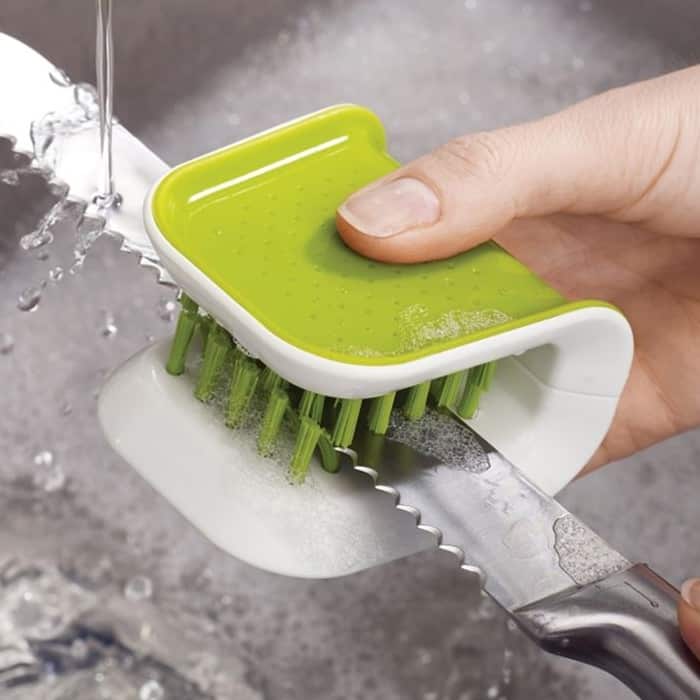
An alternative method is to use a dish brush. This allows you to scrub the knife without worrying about snags and clean every small section of the blade. To use this method, follow these steps to clean your serrated knife:
- Add a squirt of dish detergent to the blade of the knife.
- Scrub the knife down with the dish brush, cleaning every surface. Pay special attention to the points and gullets of the serrated edge, as well as the places where the blade meets the handle. Scrub down the handle as well.
- Rinse off the entire knife and dry it thoroughly. Allow it to air dry completely.
- Once dry, store in a dry place.
- Alternatively, you could use this method with an old toothbrush. This would allow you to get into smaller spaces.
How to Clean a Ceramic Knife
Ceramic knives can be very useful in the kitchen. They are very sharp and made of zirconium oxide, which is a very hard material. However, they are also very brittle and could be easily damaged by heavy-duty cleaning. For this reason, you should never place your ceramic knife in any dishwasher. You can use the following steps to clean ceramic knives:
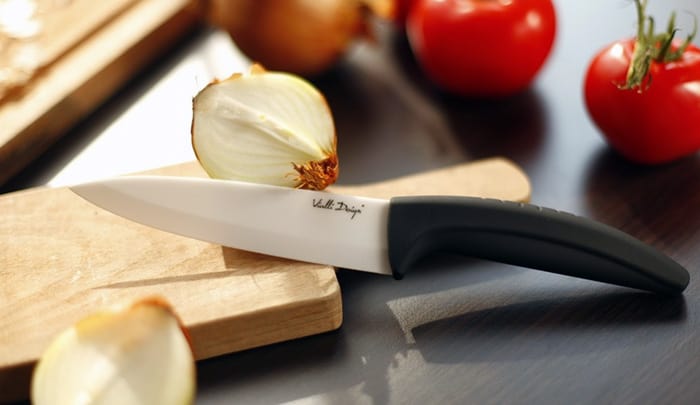
- Rinse the knife in warm water.
- You can scrub it with dish soap but use a soft dishcloth. Do not apply anything abrasive.
- Rinse the knife once more after scrubbing.
- Dry thoroughly with a paper towel.
- Leave the knife to air dry.
- Once completely dry, store the knife in a protective case or knife block.
- Do not soak the knife in a metal sink or with metal utensils. The ceramic knife will incur damage when it comes into contact with these metal objects.
How to Clean a Sword
Swords are often limited to display cases, though they are sometimes used in certain martial arts as well. If your sword is only displayed and not used, it should receive a light cleaning every few weeks. If it is used to cut anything, it should be cleaned after each use and polished once a year. Follow these steps to clean and polish a sword:
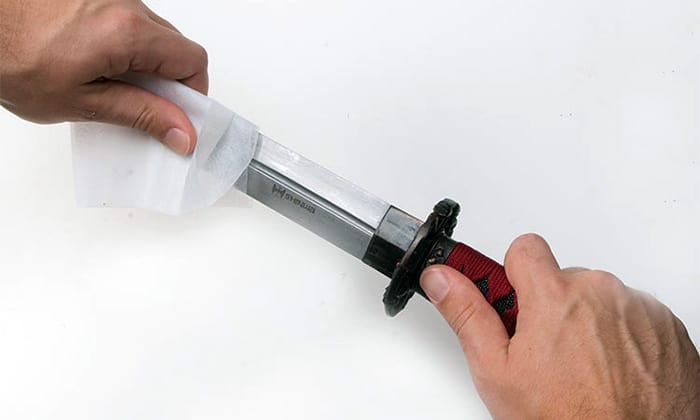
- Wipe the sword down with a soft cloth. Don’t use rough cloths that may scratch the blade of the sword.
- If you notice stubborn fingerprints that don’t wipe off, spray them with window cleaner. Wipe the sword down with the soft cloth again.
- Next, the sword should be oiled. Do this by applying mineral oil to the soft cloth, then wiping the sword down. This will coat the sword in a thin layer of oil. This should be done about once a month. All metal parts, not just the blade, should be oiled.
- When it comes time to polish your sword, apply a small drop of polishing paste to the blade. Rub it in and let it sit for about 10 minutes. Then wipe the blade clean with the soft cloth.
How to Clean a Straight Razor
Straight razors are different from knives and swords in one key way: they are the only blades that come into contact with your skin. For this reason, a dirty or rusty straight razor can become dangerous, leading to cuts and infections. It’s important to keep your straight razor clean and safe. Here are the steps to cleaning a straight razor:
- Take care not to get the handle wet. This can rust the blade when it folds into the handle. Only clean the part of the blade that is used on your face.
- Rinse the blade with soapy water. You don’t need to scrub or use a heavy-duty soap. Simply rinse it with warm water and mild soap.
- Dry the blade thoroughly with a towel or tissue.
- If you’re worried about germs after continued use, you can clean the blade with rubbing alcohol. Don’t soak it, though – simply apply the rubbing alcohol to a towel or tissue and wipe down the blade. Make sure to dry it completely afterward.
- If you will not be using your straight razor for an extended period, you should oil it. Gun oils, such as Remoil, work well for this. Simply apply a few drops of oil to the blade and spread it to cover the entire blade. Wipe off excess oil with a tissue.
- Fold your straight razor into the handle and store it in a dry place.

All Knives, Swords, and Straight Razors Should Be Kept Clean for Optimal Performance
Keeping your blades clean will help them perform better and last longer. After all, it took you a lot of time to find the perfect knife in the first place, right? Why would you want to go through the entire process again to replace it, when you can simply take care of it now?
In general, all blades should be hand-washed, dried thoroughly, oiled, and stored in a dry place. This will protect them and allow them to last a lifetime.
Certain types of knives have specific requirements. Pocket knives need their hinges and locking mechanisms cleaned out and oiled. Brushes should be used to clean the points and gullets of serrated knives. Ceramic knives should be cleaned carefully without any aggressive scrubbing. Swords should also be wiped down, oiled, and polished. Straight razors only need the blade cleaned, and should be oiled before storing.
These maintenance tips will help keep your knife or sword performing at its best.

